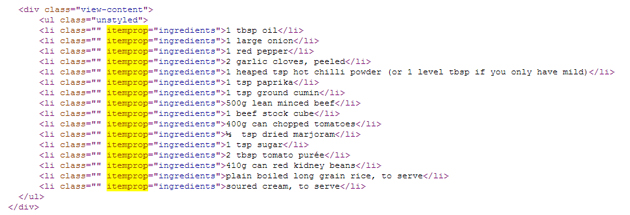So you have your Twitter account, you can see who you are following, you can see who follows you and you can see which of those you are following are following you.

Great, but now you want to know:
- Who is not following you back?
- Who has recently stopped following you?
- What are your contacts tweeting about?
- Who is a useless twit?
Those interested in building up their online presence using social media may be interested in our one day Social Media course. There are loads of Twitter applications out there that can answer these questions for you, here are just a few of my favourites:
- TwitterCounter: THE number 1 stats site for your Twitter account.
- My Tweeple: My Tweeple lists your follower and those you follow with their bio snippet attached, this is really useful if you want to contact them outside of twitter as their website or LinkedIn account is usually listed.
- FriendOrFollow: Who are you following that’s not following you back? Who’s following you that you’re not following back? A very concise and visual tool.
- ChirpStats: To find out when someone has unfollowed you, simply follow @chirpstats on Twitter and then it will message you every time you are unfollowed.
- Refollow - Allows you to filter out unimportant follows and group together different types of useful people you follow. It's a great way to manage your followers and friends.
Heather Buckley
13 Oct 2009
So you have your Twitter account, you can see who you are following, you can see who follows you and you can see which of those you are following are following you.

Great, but now you want to know:
- Who is not following you back?
- Who has recently stopped following you?
- What are your contacts tweeting about?
- Who is a useless twit?
Those interested in building up their online presence using social media may be interested in our one day Social Media course. There are loads of Twitter applications out there that can answer these questions for you, here are just a few of my favourites:
- TwitterCounter: THE number 1 stats site for your Twitter account.
- My Tweeple: My Tweeple lists your follower and those you follow with their bio snippet attached, this is really useful if you want to contact them outside of twitter as their website or LinkedIn account is usually listed.
- FriendOrFollow: Who are you following that’s not following you back? Who’s following you that you’re not following back? A very concise and visual tool.
- ChirpStats: To find out when someone has unfollowed you, simply follow @chirpstats on Twitter and then it will message you every time you are unfollowed.
- Refollow - Allows you to filter out unimportant follows and group together different types of useful people you follow. It's a great way to manage your followers and friends.
Heather Buckley
13 Oct 2009
Is it possible to increase search visibility without building links?
At BrightonSEO in April Semantic Search was a popular topic that featured in many talks and I also had the pleasure of taking part in a Semantic Search Roundtable discussion, sponsored by Intelligent Positioning.
My inspiration for this post was Andrew Isidoro's post 'I Am an Entity: Hacking the Knowledge Graph' and companion talk at BrightonSEO. Read his post and then watch the talk below:
Andrew Isidoro at BrightonSEO April 2014
It is also worth reading Krystian Szastok's follow up post 'I Became an Entity: How I'm on the Knowledge Graph' which gives further evidence of becoming an entity with some additional tips.
Andrew and Krystian's posts are both excellent reads, but they focus on individuals and the knowledge graph.
I also want to focus on businesses.
How can businesses get themselves into the knowledge graph, and also take advantage of the other features of semantic search?
First, a bit of theory about why this is so important.
Craig Charley
16 May 2014
Is it possible to increase search visibility without building links?
At BrightonSEO in April Semantic Search was a popular topic that featured in many talks and I also had the pleasure of taking part in a Semantic Search Roundtable discussion, sponsored by Intelligent Positioning.
My inspiration for this post was Andrew Isidoro's post 'I Am an Entity: Hacking the Knowledge Graph' and companion talk at BrightonSEO. Read his post and then watch the talk below:
Andrew Isidoro at BrightonSEO April 2014
It is also worth reading Krystian Szastok's follow up post 'I Became an Entity: How I'm on the Knowledge Graph' which gives further evidence of becoming an entity with some additional tips.
Andrew and Krystian's posts are both excellent reads, but they focus on individuals and the knowledge graph.
I also want to focus on businesses.
How can businesses get themselves into the knowledge graph, and also take advantage of the other features of semantic search?
First, a bit of theory about why this is so important.
Craig Charley
16 May 2014
New SEO Course - Advanced SEO Training for Managers?. Get hands-on with Structured Data Markup & Semantic Search.
Have you ever wondered where Google gets the information for search results like these?

This is an example of Rich Snippets generated by Structured Data.
Structured data markup helps search engines understand the context of a webpage through the use of HTML tags.
You identify an item (ie. recipe) and its properties (ingredients, preptime, nutrition etc.).
See which items and properties BBC Good Food has used with Google's Structured Data Testing Tool.
You can also check the page source to see how they have actually marked up the page:

Aaron Charlie
20 Feb 2014
New SEO Course - Advanced SEO Training for Managers?. Get hands-on with Structured Data Markup & Semantic Search.
Have you ever wondered where Google gets the information for search results like these?

This is an example of Rich Snippets generated by Structured Data.
Structured data markup helps search engines understand the context of a webpage through the use of HTML tags.
You identify an item (ie. recipe) and its properties (ingredients, preptime, nutrition etc.).
See which items and properties BBC Good Food has used with Google's Structured Data Testing Tool.
You can also check the page source to see how they have actually marked up the page:

Aaron Charlie
20 Feb 2014
We've updated this article for 2014 and turned it into a free downloadable Mobile Strategy eBook. Find out what your options are for mobile development and which platform is right for your business. Once you've decided, take a look at our Mobile Development courses and start learning an essential skill for 2014.
|
Last year we wrote about ‘the mobile future’. Well, that future has become the present. As a business owner, what are your options for entering the ever-growing mobile market? In the US, smartphones outnumber feature phones. In India, this year mobile web users will outnumber desktop web users. Not only is the mobile market growing but it’s becoming more profitable. Google recently added in-app subscriptions to the Play Store, PayPal is taking mobile to the high street and banks are getting in on the act led by Barclays Pingit. |
 |
Fears of security have been swept aside as mobile users worldwide devour information & entertainment on the go.
The opportunities for marketing are huge. Last year the mobile market was estimated to be worth $25-50 billion by 2015, but as China’s app market is valued at $35 billion those early figures massively undersell the mobile market.
Mobile at a Glance
Users can access content on their smartphone or tablet in two ways – via a browser or by downloading an app. You should be making sure that potential customers can access your content via one of these options:
- Browser – Websites (desktop, mobile & responsive) and Web Apps
- Application – Native Apps
So which one should you choose? Use our helpful guide to decide!
We run an Android App Workshop, teaching you how to design, develop and market apps for the two most popular mobile operating systems - with a combined market share of 82% between them!
Aaron Charlie
5 Feb 2014
Communities are your best social media tool when starting a business.
Stop shouting into a void and start communicating; they are a great way to engage with potential customers, investors and brand advocates.
Offline networking is still a powerful tool but online communities can give you a global reach and are often more time and cost effective for your limited resources.
In this post you'll find out why communities are so vital and how you can start using them.

To learn more about using social media & communities to grow your business and engage with consumers and influencers, come on our Social Media workshops and Blogging courses. Together they will give you a powerful toolset to boost your brand online.
Why It's Important
You've started new business with a new idea. How do you get people to care?
You could spend money on advertising, but it would have to be a very good campaign to convince prospective buyers to take interest in a company they've never heard of.
Social proof is a strong selling point; it's not surprising why social media platforms are trying to take advantage of it with social ads (your friend X like our product) and why consumers are so protective of how their actions are used as social proof.
Recommendations are most valuable when they come naturally. It's easy to tell the difference between a genuine review and one prompted by a promotion or giveaway.
If you can create a community around your business or convince an existing community to take notice of your business then they will do a lot of the hard work for you, giving you the initial investment that you can later use on advertising to grow outside of the community.
Craig Charley
21 Jan 2014